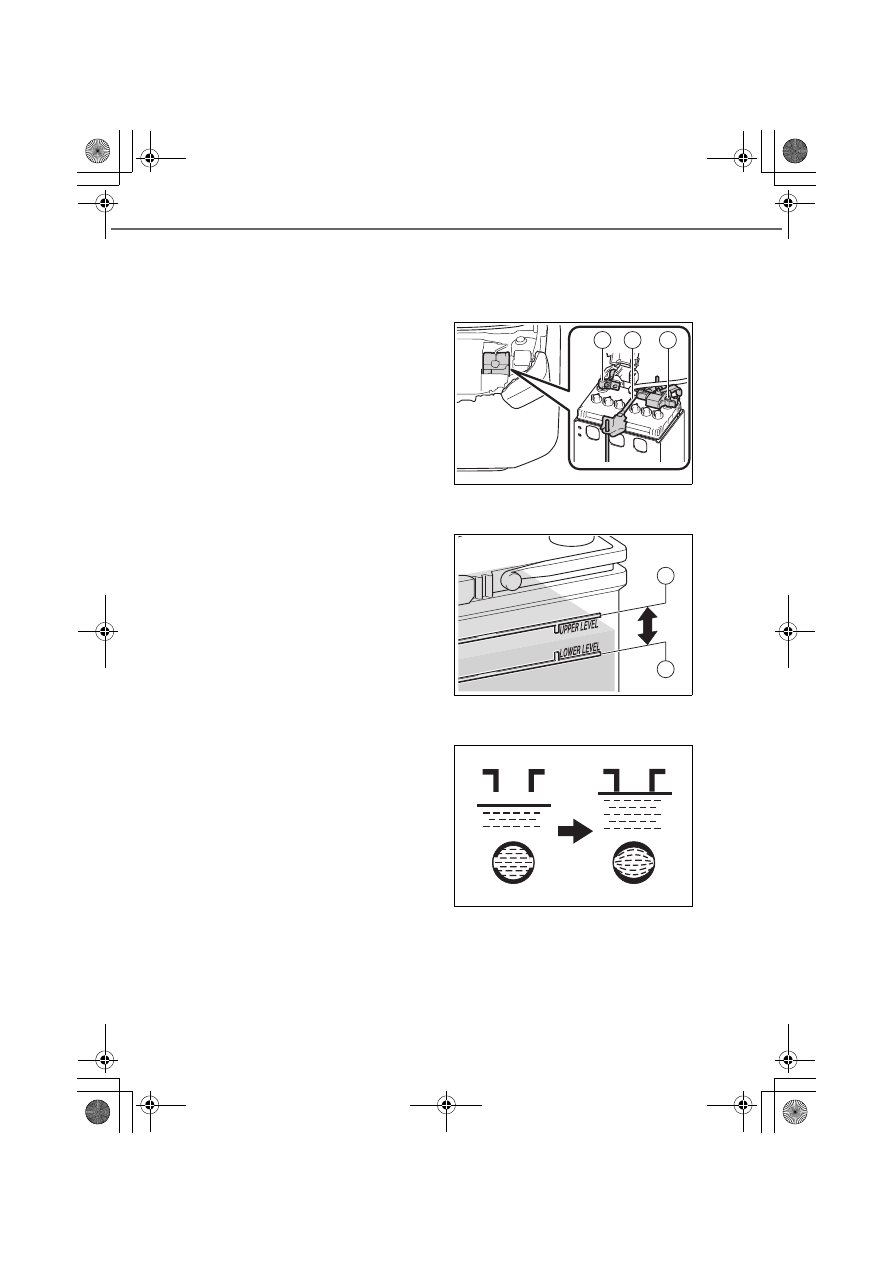Toyota Raize (2023 year). Manual in english - page 20

322
6-3. Do-it-yourself maintenance
⬛
Battery exterior
Make sure that the battery terminals are not corroded and that there are
no loose connections, cracks, or loose clamps.
a
Terminals
b
Hold-down clamp
⬛
Checking battery fluid
Check that the level is between the
“UPPER LEVEL” and “LOWER LEVEL”
lines.
a
“UPPER LEVEL” line
b
“LOWER LEVEL” line
If the fluid level is at or below the
“LOWER LEVEL” line, add distilled water.
⬛
Adding distilled water
a
Remove the vent plug.
b
Add distilled water.
If the “UPPER LEVEL” line cannot be seen, check the fluid level by looking directly at
the cell.
c
Put the vent plug back on and close it securely.
1
1
2
KBRO620909N
1
2
KBGR620910E
KBTE730408